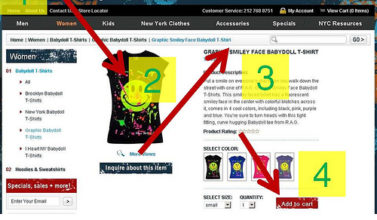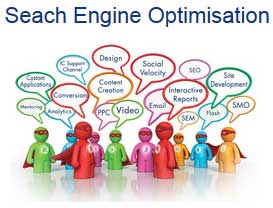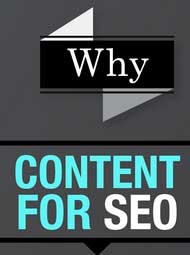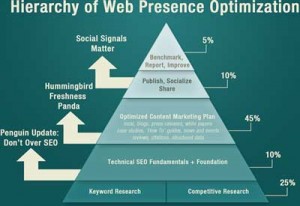
As a content marketer, you should know the importance of developing a quality content strategy to ensure that you reach your target audience with the right message. Recently, there has been some chatter around short-form or long-form content and whether one is better than the other.
Well, the content marketing world is forever changing and whilst short-form and long-form content has its place, there isn’t a right or wrong answer. A popular Google Search has been the question: “how long should a blog post be?” As you’ll discover later in the article, the answer may surprise you.
Now, considering all the available online resources, what is the common theory? Whilst many believe that longer content drives better results, others have different opinions. Truth is, both can be very powerful tools in your content marketing toolbox and it comes down to knowing your customers.
What Is Short-form Content?
Short-form content is usually articles or any piece of content consisting of 1,000 to 1,200 words. This type of content is typically quick and easy to digest as it covers a specific area of a topic instead of explaining something in great detail. Some of the most common examples of short-form content are:
- Short blog posts
- News articles
- eBooks
- Infographics
- Social media posts
- Emails
Short-form content is easier for your readers to consume and relatively quicker for you to create. It is often useful to convey crucial information in a concise format as the goal is to get a single message across as quickly and effectively as possible.
Recommended: ‘6 Content Marketing Tips To Increase Conversions’
When Should You Use Short-form Content?
Remember, short-form content is all about sharing one idea and keeping things simple. This type of content is particularly useful in the following scenarios:
- Target audience is already familiar with your brand, products or services as they want specific information that will help them make a purchase
- Selling relatively inexpensive and commonly used products or services often benefit from short descriptions
- Interacting with existing customers or qualified leads, especially if they’ve already purchased from you
- Creating ad copy for specific formats such as PPC campaigns, Facebook Ads and email subject lines
Advantages Of Short-Form Content
Whilst many established brands prefer short-form content, they make sure whatever they create is engaging. Some only have blog posts of 500 – 700 words but if it gets the message across and it’s easy to read, chances are it will be shared time and time again. Here’s a quick look at the major benefits of short-form content:
- Improved readership
- Less time-consuming
- More frequent publishing
- Mobile-friendly as shorter content is easier to read
- Easily shared across multiple devices and channels
- Better customer engagement rates
At the same time, there are also several disadvantages such as short-form content not always contributing to good search engine rankings. This is due to the lack of depth with the restrictive word-count stopping you from having keyword-rich content. With shorter content comes less time spent on your website which could result in lower average time on site and poorer bounce rates.
What About Long-Form Content?
Long-form content is usually anything over 1,200 words but mostly 2,000 words or more. This type of content is more in-depth and truly engages with audience members based on the topic it covers. Long-form content is not created to be consumed quickly but rather to educate and inform people who are looking to answer a specific question or find out more about a certain topic.
Long-form content provides readers with loads of information from meaningful insights and analyses to the latest statistics and data. It is more demanding as it takes longer to write and find relevant resources. Some example of long-form content include:
- Longer, more in-depth blog posts
- Evergreen pages
- How-To Guides and tutorials
- Whitepapers and eBooks
- Webinars and virtual events
- Pillar pages
When Should You Use Long-form Content?
Long-form content is all about educating your target audience, giving them in-depth information which could influence their purchasing decisions. Here are some instances where long-form content is ideal:
- People in the early stages of the buyers’ journey as they have little to no knowledge of your products or services
- When you are selling high-end products or services that require passing on extensive information
- A new brand trying to launch a product or service
- Brands selling technical products and would have to explain specifications and uses in detail
- If your sales process involve a long and complex purchasing cycle
Advantages Of Long-Form Content
We’ve already seen that short-form content has several benefits and a few drawbacks and the same applies here. Long-form content may be better in some scenarios but the length can also negatively impact your brand. Let’s first take a look at the advantages:
- Seamless integration of keywords resulting in rich content
- Better chance of getting more backlinks if you have useful data, statistics or infographics
- Improved search engine rankings courtesy of Google’s Panda algorithm update
- Better website parameters including bounce rate and time spent on site (use SEMrush to track your SEO efforts)
- Long-form content takes time and research to create which results in better credibility
- Due to the effort, there’s also less competition
- Publishing long-form content is indicative of being an industry leader
- Better scannability which often means more social shares
- Easy to repurpose long-form content
Disadvantages Of Long-form Content
As with short-form content, there are also a few downsides to long-form content. Firstly, it is difficult and time-consuming to create content with more than 2,000 words as it requires loads of research, referencing and writing for SEO.
Due to its length, people tend to lose interest as they only have a limited attention span so make sure your blog post or pillar page is well-structured and engaging. Many brands will agree that it’s often difficult to be consistent with long-form content in terms of writing and regular publishing.
Lastly, we look at mobile-friendliness as long pieces of content can be difficult and tiresome to read. Considering the smaller screen size and reduced attention span, it may not attract many mobile device users.
What’s The Verdict?
Now that you have a better understanding of both short-form and long-form content, which do you think is the best option? Here comes a spoiler alert – there is no clear winner because each type of content complements the other, as long as it’s written well, in the right format and engaging.
That said, if your content strategy solely involved writing long blog posts, ebooks, whitepapers and how-to guides, you will find it rather difficult to keep the attention of your target audience. At the same time, when you only focus on short-form content, it could negatively impact your brand credibility and search engine ranking.
How To Choose The Right One For You
The simplest way to choose what’s best for your brand is by looking closely at the buyers’ journey. You need to understand where your audience members are in the sales funnel as that would ultimately determine your choice.
When someone is in the awareness stage, for example, they will need more convincing before they consider making any sort of purchase. Here, long blog posts, ebooks and tutorials can work in your favour.
It’s a different story for qualified leads who are in the decision stage of the buyers’ journey need as they only need a little push before making a choice. For these leads, you can send a targeted email highlighting the benefits of your new product.
Conclusion
The debate on short-form content versus long-form content will continue as both have a purpose and several upsides. Where long-form content is great for search engine rankings and credibility, there is a risk of people losing interest especially when viewed on mobile devices.
A combination of both may be a solution as it mostly depends on where your customers are in the buying journey. Always consider the context of purchase to ensure you integrate various elements into your strategy. Whatever you decide, make sure the content you create is interesting, relevant, engaging and in the right format so the end-user (customer) is the real winner.
If you need expert advice on content marketing, social media, SEO, PPC or marketing automation, contact WSI eMarketing today. Together, we can find the right strategy for your brand whether you prefer long-form content or short-term content.
Related Post
Top Tips for Product Page...
As the internet evolves and user expectation becomes increasingly sophisticated, creating...
- May 31, 2011
- By Rob Thomas
- e-Commerce
What is SEO?
SEO or Search Engine Optimisation to give it its full name is the process that helps your...
- July 29, 2013
- By Nadine Thomas
- Digital Marketing
3 Tips for Content Marketing...
What exactly is content marketing? Content marketing is a way of attracting and retaining...
- August 2, 2013
- By Rob Thomas
- Content Marketing
6 tips for creating good...
It wasn’t so long ago that the majority of internet socialites were using MySpace and...
- September 27, 2013
- By Rob Thomas
- Content Marketing
‘Push’ and ‘Pull’...
There are two types of marketing- push and pull- and depending on what business you are...
- October 10, 2013
- By Rob Thomas
- Content Marketing
5 Ways AdaptiveSEO™ can...
Changes in the world of Search Engine Optimisation (SEO) mean it’s getting harder for...
- March 7, 2014
- By Nadine Thomas
- Content Marketing











Leave a Comments